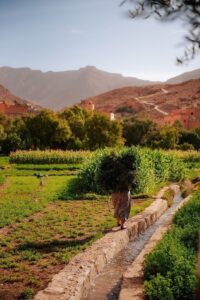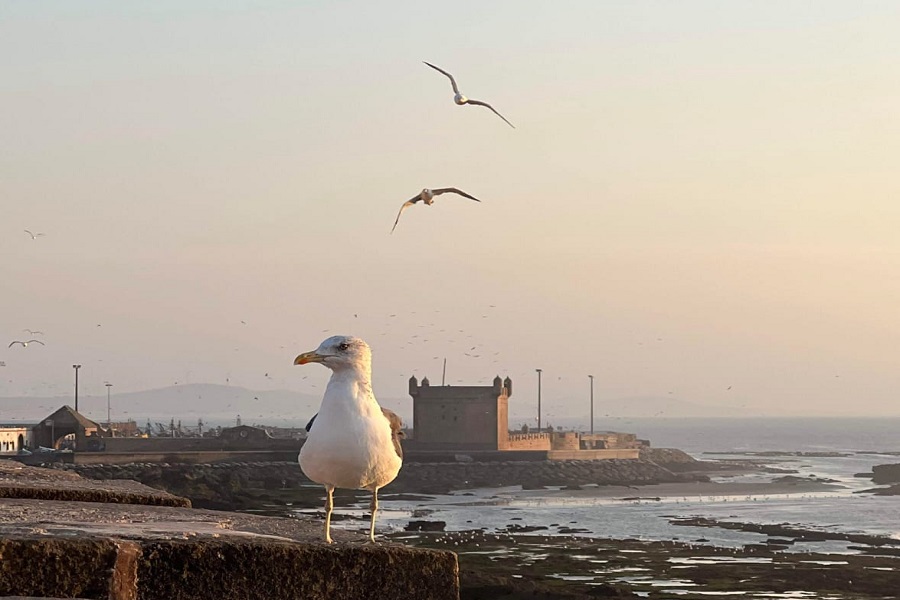Morocco Atlas Mountains
The Atlas Mountains, stretching across Morocco from the Atlantic coast in the southwest to the northeastern borders. Are a spectacular destination for travelers seeking natural beauty, adventure, and cultural experiences. This rugged mountain range is divided into three main sections: the High Atlas, the Middle Atlas, and the Anti-Atlas. Each offering unique attractions and activities.
Geography and Climate
The High Atlas is the highest and most dramatic part of the range, home to Jebel Toubkal. North Africa’s tallest peak at 4,167 meters (13,671 feet). The Middle Atlas, characterized by cedar forests and limestone plateaus. Presents a greener, more fertile landscape, while the Anti-Atlas, to the south, is known for its arid and rocky terrain.
The climate varies significantly with elevation and region. The High Atlas experiences cold winters with snow-covered peaks, while summers are mild. The Middle Atlas enjoys a Mediterranean climate with more rainfall, and the Anti-Atlas is generally dry and warm year-round.
Cultural Significance
The Atlas Mountains are inhabited by Berber communities who have preserved their traditional way of life for centuries. Visitors can experience Berber culture through music, crafts, and cuisine. The mountains are dotted with picturesque villages, where mud-brick houses and terraced fields blend harmoniously with the natural landscape.
Popular Activities and Attractions
Tourism in the Atlas Mountains offers a range of activities that cater to different interests and adventure levels:
- Trekking and Hiking: The Atlas Mountains are a haven for trekkers. With routes ranging from easy walks to challenging multi-day treks. The ascent of Jebel Toubkal is a popular challenge for experienced hikers. While the scenic trails around Imlil and the Ourika Valley are accessible to less experienced adventurers.
- Mountain Biking: Numerous trails crisscross the mountains, offering exhilarating rides through diverse landscapes. The varying terrains cater to both beginners and advanced cyclists.
- Skiing and Snowboarding: In the winter months, the High Atlas boasts Africa’s highest ski resort, Oukaïmeden. The resort provides skiing and snowboarding opportunities with breathtaking mountain views.
- Cultural Tours: Visitors can explore traditional Berber villages, experiencing local hospitality and learning about the region’s history and culture. Staying in a local guesthouse or participating in a homestay provides a deeper cultural immersion.
- Nature and Wildlife Watching: The diverse ecosystems of the Atlas Mountains support a variety of wildlife. Including Barbary macaques, eagles, and rare plant species. The cedar forests of the Middle Atlas are particularly renowned for wildlife observation.
- Rock Climbing: The Todra Gorge in the High Atlas is a renowned destination for rock climbing, offering routes suitable for all skill levels against the backdrop of stunning vertical cliffs.



Sustainable Tourism and Conservation
Efforts are increasingly focused on promoting sustainable tourism practices in the Atlas Mountains to preserve the natural environment and support local communities. Eco-friendly accommodations, responsible trekking practices, and community-based tourism initiatives help ensure that tourism benefits both the visitors and the indigenous populations.
The Atlas Mountains of Morocco offer a rich tapestry of natural beauty, cultural heritage, and outdoor adventure. Whether you seek the thrill of climbing North Africa’s highest peaks, the tranquility of a mountain retreat, or a cultural journey through traditional Berber villages, the Atlas Mountains provide an unforgettable experience for all types of travelers. As tourism in the region grows, sustainable practices and respectful engagement with local communities remain key to preserving the unique character and environment of this remarkable mountain range.

